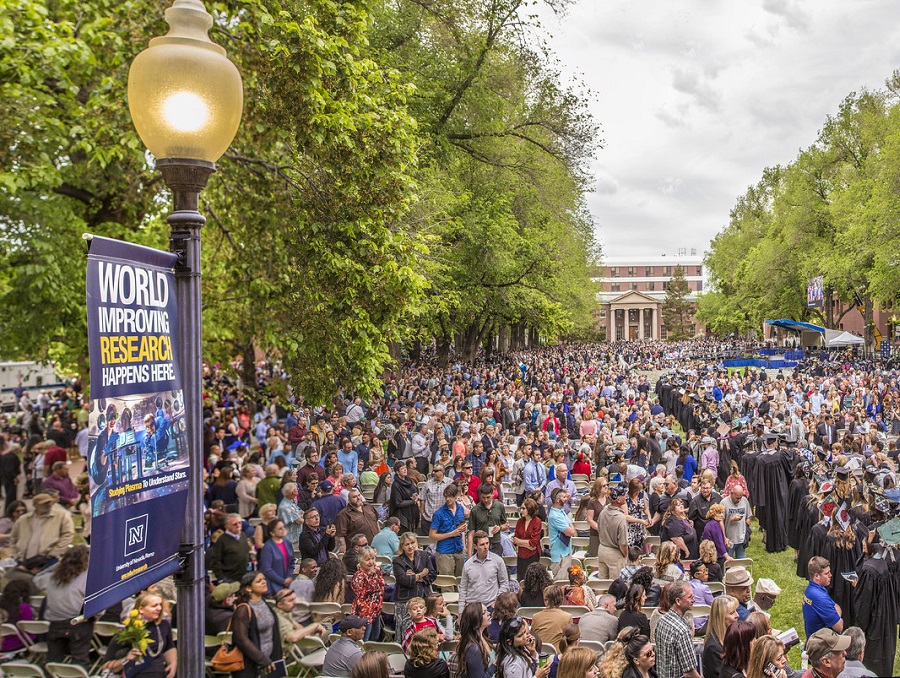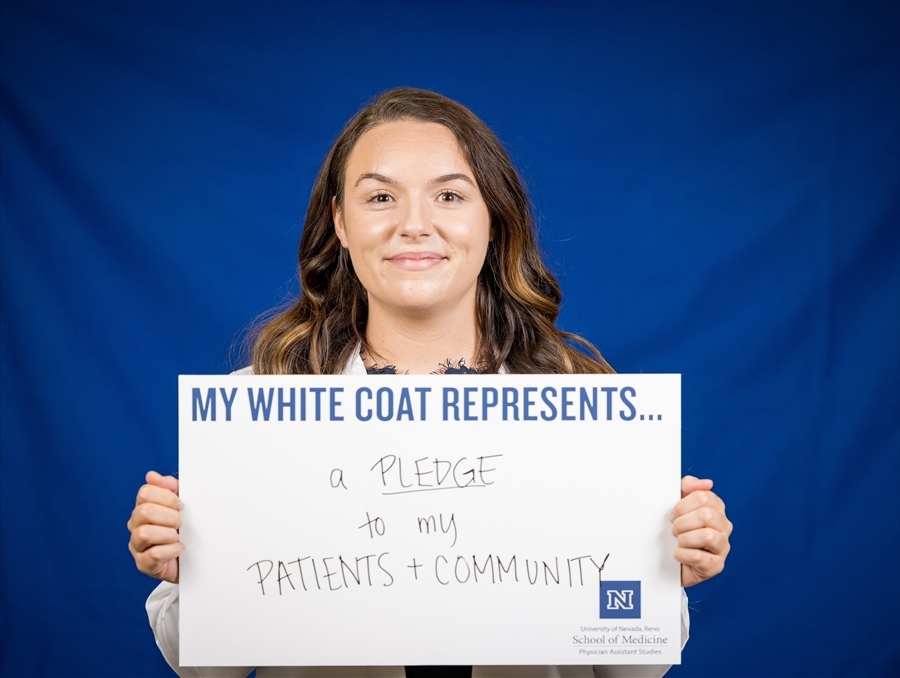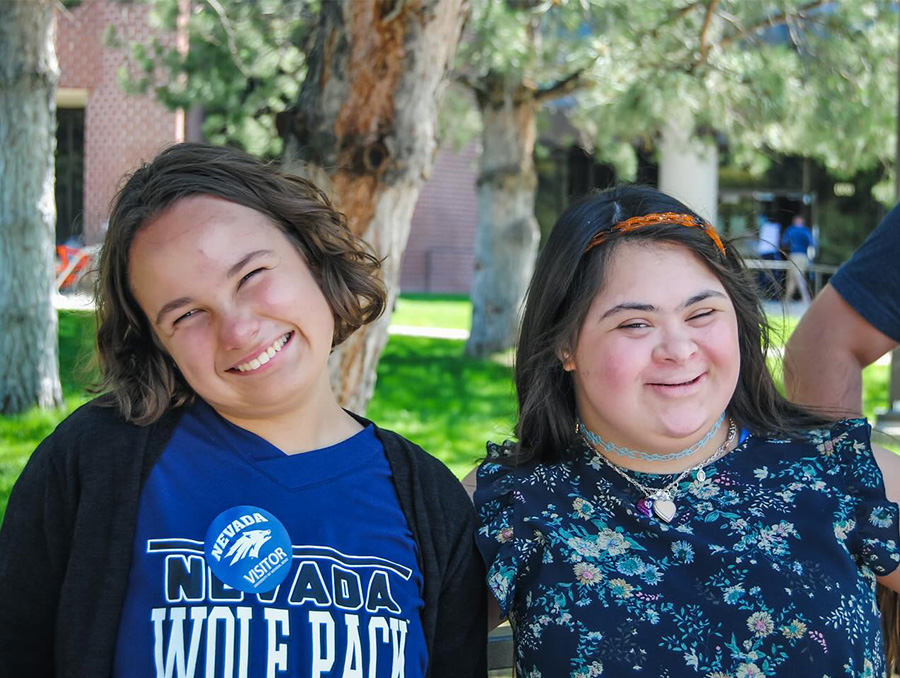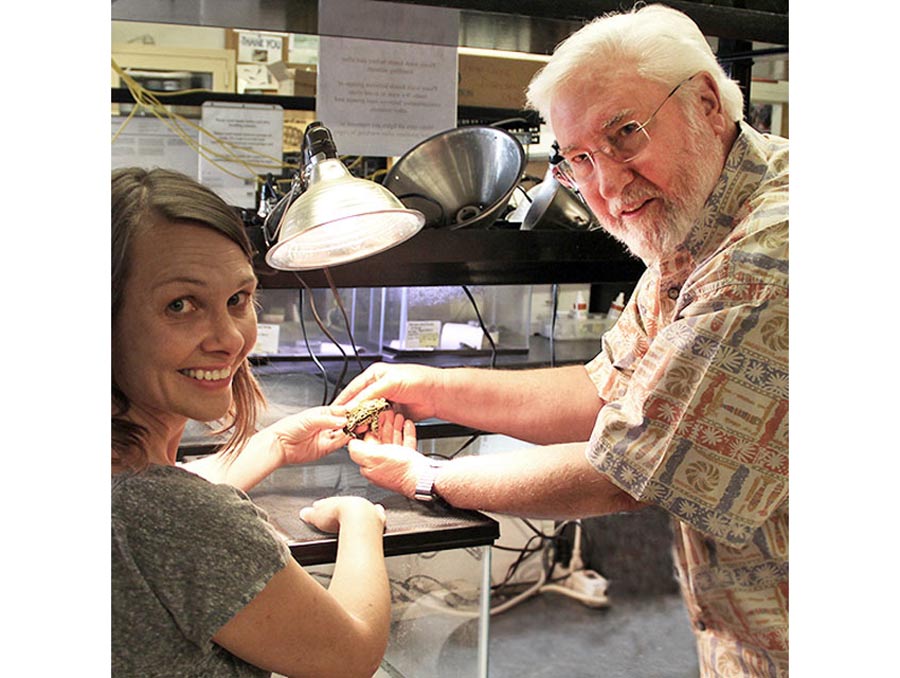For the 10th straight year, the University is ranked in the top tier of “Best National Universities” by U.S. News & World Report, which released its annual rankings for its special 2020 edition earlier this month.
The University is ranked No. 240 among “National Universities,” which includes public and private institutions, and is also ranked No. 117 among “Top Public Schools.”
“National Universities,” according to U.S. News, offer a full range of undergraduate majors, plus master’s and doctoral programs, and emphasize faculty research or award professional practice doctorates.
“Being ranked in the top tier of undergraduate programs at U.S. universities over the past decade is a significant milestone for our institution,” said Kevin Carman, provost and executive vice president. “It is a product of our commitment to student success through a variety of programs such as ‘First in the Pack,’ which provides support for first-generation students, Living Learning Communities in our dormitories, expanded opportunities for undergraduates to participate in research, and ‘NevadaFIT,’ which helps new freshmen successful transition into the university academic environment. “
Carman added, “We have made significant improvements in metrics such as graduation rates, student-to-faculty ratios, and student-to-advisor ratios, which directly or indirectly impact the metrics associated with our top-tier classification. That said, our commitment to student success is a journey and not a destination. Our faculty, staff, and administration are deeply committed to enhanced student learning and success through continuous improvement of the entire student living and learning experience at the University of Nevada, Reno.”
In 2018, the University ranked No. 201 on the U.S. News list. According to U.S. News & World Report’s methodology, there is a numbers-related reason why the University ranked No. 240 this year compared to No. 201 last year. There are now 292 schools that are classified in the top tier of “National Universities,” compared to 226 a year ago.
U.S. News writes that its rankings “strictly map its categories to the Carnegie Classification of Institutions of Higher Education’s Basic Classification system.” Earlier this year Carnegie’s “Update” of its classification system reclassified many institutions. Consequently, U.S. News writes, “many schools are categorized in different U.S. News rankings for the 2020 edition compared with the previous edition. This underscores that the total number of schools ranked in our National Universities ranking increased by more than 25 percent year-to-year while total ranked Regional Universities (the tier below National Universities) decreased by approximately 10 percent year-to-year.”
This has meant that several institutions might have seen their ranking change by several spots between last fall’s rankings and this fall’s new rankings. Serge Herzog, director of Institutional Research at the University, said that due to the new members of “National Universities,” the University’s relative ranking went from the 89th percentile to the 82nd percentile this year, which is actually an improvement from where the institution ranked in relation to other institutions this year, Herzog noted.
A quick glance at the rankings of several peer institutions of the University, including all of the members of the Mountain West Conference which reached “National University” top tier status, and which share similar enrollments, geography and aspiration, bear out the fact that there was indeed movement for several others as well.
- Utah – 104 in fall 2019; 119 in fall 2018
- Oregon – 104 in fall 2019; 102 in fall 2018
- Arizona State – 104 in fall 2019; 115 in fall 2018
- Arizona – 117 in fall 2019; 106 in fall 2018
- Oregon State 139 in fall 2019; 140 in fall 2018
- San Diego State – 140 in fall 2019; 127 in fall 2018
- Colorado State – 166 in fall 2019; 140 in fall 2018
- Hawaii – 166 in fall 2019; 157 in fall 2018;
- Washington State – 166 in fall 2019; 140 in fall 2018
- Idaho – 179 in fall 2019; 165 in fall 2018
- Montana – 254 in fall 2019; 201 in fall 2018
- Fresno State – 211 in fall 2019; 205 in fall 2018
- New Mexico – 218 in fall 2019; 187 in fall 2018
- Wyoming – 228 in fall 2019; 183 in fall 2018
- New Mexico State – 263 in fall 2019; 221 in fall 2018
“Our relative position over the past two years vis-à-vis these peers is mixed, gaining ground on some institutions while losing ground on others,” Herzog said. “Compared to our peers, the University’s rank has remained fairly stable over the past two years, and overall has improved with the tier 1 group.”
To place a school in a certain classification, U.S. News uses the following weights and factors: Outcomes (graduation and retention rates, graduation rate performance, social mobility – which also includes Pell Grant graduation rates and Pell Grant graduation rate performance); Faculty Resources (class size, faculty salary, proportion of faculty with highest degree in their fields, proportion of faculty who are fulltime); Expert Opinion (academic reputation from presidents, presidents and deans of admissions from around the country); Financial Resources; Student Excellence (standardized tests, high school senior class standing); Alumni Giving.
Other recent University reputational rankings
The 2019 Wall Street Journal/Times Higher Education Rankings were released earlier this month. The University ranked No. 276 for all private and public universities in the United States, moving up from 2018’s ranking of 384. The University also ranked No. 84 for public universities.
The Wall Street Journal/Times Higher Education Rankings’ overall methodology explores four key areas – Resources (finance per student, faculty per student, research papers per faculty); Engagement (student engagement, student recommendation, interaction with teachers and students, number of accredited programs); Outcomes (graduation rate, value added to graduate salary, debt after graduation, academic reputation); Environment (student diversity, student inclusion, staff diversity, proportion of international students).
In December, it was announced the University was classified as an “R1” institution by the Carnegie Classification of Institutions of Higher Education. An R1 designation – “Very High Research Activity” – by Carnegie is reserved for doctoral universities with the highest levels of research activity. The University and UNLV are among only 130 institutions in the country to receive the R1 designation.









